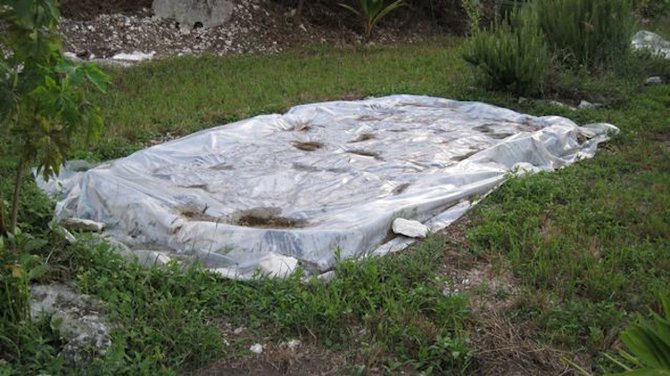There are few vegetables that can be grown during the hottest months of the year and it may well be that many gardeners have empty veggie lots that need regular weeding.
There are a few profitable activities available to the home gardener. One is to condition the garden in preparation for next season’s vegetables. This can be done by composting certain growing areas.
Many people shrink from the word ‘compost’. The world of composting is full of forbidding words like balance, nitrogen and carbon, green and brown, ratios, precise moisture content, and such. Composting in cool climates is indeed a tricky procedure but here in the sub tropics composting is ridiculously easy.
It’s this easy: Dig deep holes where you intend to plant tomatoes in late September. Over the next few weeks fill the holes with kitchen detritus. You’ll be surprised at how much of it a small family produces. When you have donated to all the holes, go back to the first one because a few feet of kitchen discards soon turns into a few inches of compost.
What to put into the holes: Cabbage and lettuce leaves, banana and citrus peels, coffee grounds, soft tissue and paper towels, rotten fruit with seeds removed, potato peelings, old bread and such. Do not put in cooked foods, anything containing fat or sugar, or dairy products. The notable exception here is sour buttermilk.
When you are happy with your amount of compost you can close the holes and mark their location with bamboo stakes or something similar.
A more sophisticated way to prepare your garden for the new growing season is to solarise it. This is done by weeding the garden then thoroughly watering it. Cover the garden with clear plastic sheeting and hold the sides down with rocks or lengths of 2” x 4” lumber.
It may seem that black plastic would be more efficient but clear plastic is recommended because sunlight has antiseptic qualities. The watered soil transmits heat to a depth of six to eight inches and kills off nematodes, insects and insect eggs. It will also bake weed seeds that are present and cause them not to grow once the sheeting is lifted.
When the sheeting has been down for a week you should test the soil for dampness. You may have to water the garden again and this is easily accomplished by inserting a hose with a fan sprayer at enough points to soak the whole area.
I would suggest a minimum of three weeks for solarisation to be effective but as long as the soil is kept wet you could leave the sheeting on for as long as you like. Weeds will not grow while the clear sheeting is in place and what else do you have to do with the garden?
The sheeting should be lifted about one week before you plan to sow seeds or put in transplants. Solarisation unfortunately kills off microorganisms that the soil requires. These can be replenished by digging in fresh compost. If no compost is available you can use commercial cow manure.
Liquid fertilizer such as Miracle Gro is probably the best way to bring up the nutrient level in the soil. Time release and granular fertilizers can be added after the transplanting is done.
It makes sense to improve the soil while we are in a barren time of year and solarisation has the added virtue of preventing weeds from growing all through the summer.
If you solarise your soil for a month and then use the ‘pot-hole’ form of making compost for a few weeks you will be in good shape for the new vegetable growing year.





Comments
Use the comment form below to begin a discussion about this content.
Sign in to comment
Or login with:
OpenID